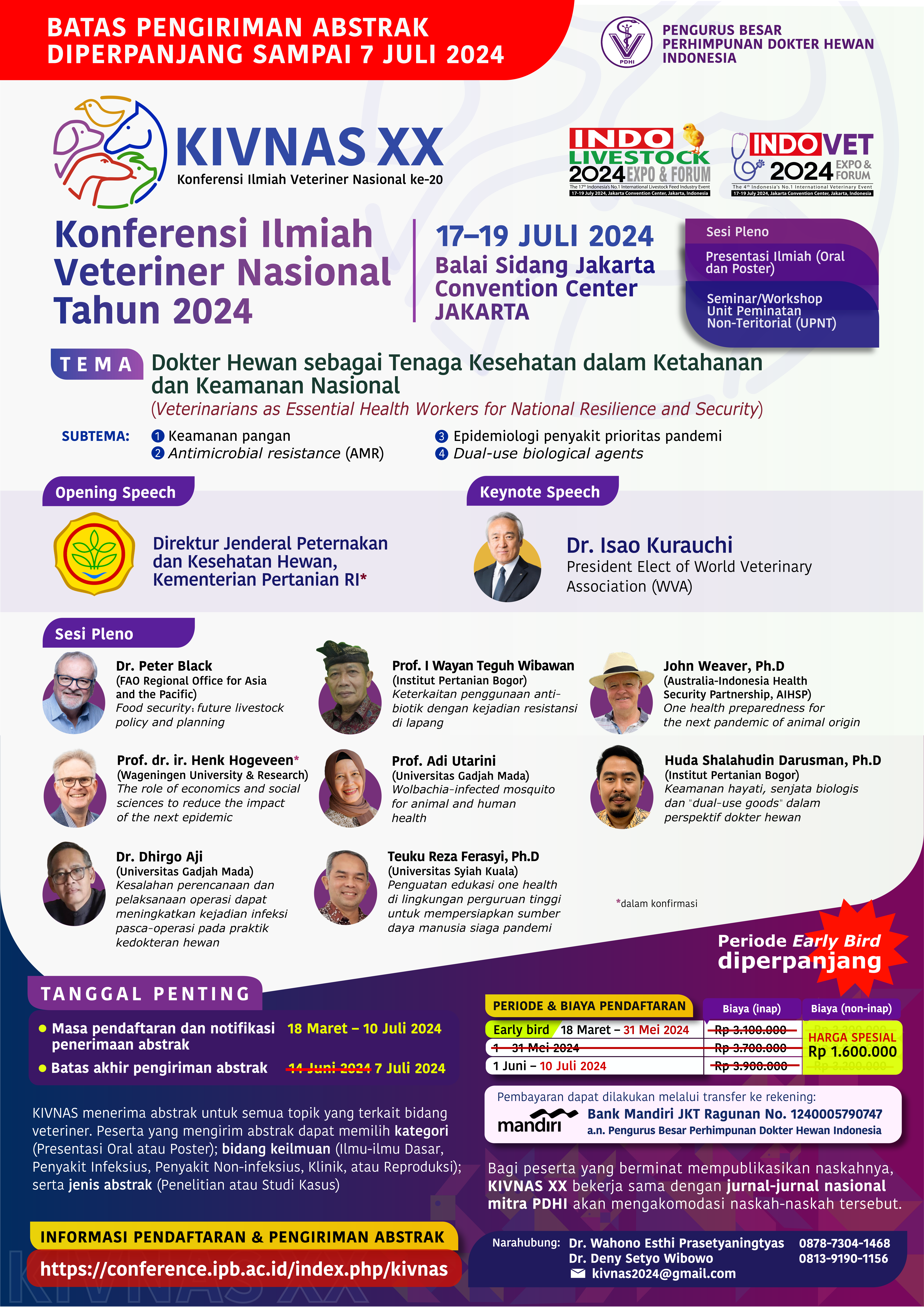Cardiac Infarction Method on Swine (Sus scrofa domestica) Animal Model
Keywords:
coronary artery, swine, echocardiography, electrocardiography, myocardial infarctionAbstract
Background: Coronary heart disease is the leading cause of fatality in Indonesia, so it is necessary to create a simple, effective, and efficient animal model to study myocardial infarction.
Objectives: This study aimed to use a swine (Sus scrofa domestica) animal model to accurately demonstrate infarct progression and response to cardiac muscle regeneration therapy.
Methods: The animal models used in this study were 17 male pigs aged 4–5 months and weighing 40–50 kg. Echocardiographic and electrocardiographic examinations were performed before and after treatment, while cardiac MRI was performed after treatment. Skin and muscle incisions were made at the 4th–5th intercostal for a length of 8–10 cm. The muscle layer was separated and the pleural cavity was reached. The heart membrane (pericardium) was opened, pericardial cavity was explored to identify the coronary artery. Ligation was performed on the distal 1/3 of the coronary artery with a polypropylene suture, 6-0 premilene suture on the left ventricular wall. The heart was observed its movement macroscopically and was marked the infarct area with 7-0 premilene sutures in the 4 directions.
Results: The directly observed results indicated that the ligation procedure decreased cardiac muscle contractility and myocardial discoloration to cyanotic, and echocardiographic and electrocardiographic examinations showed decreasing the function of cardiac contraction.
Conclusion: In conclusion, the ligation procedure of the distal 1/3 of the coronary artery causes myocardial infarction in swine animal model.



